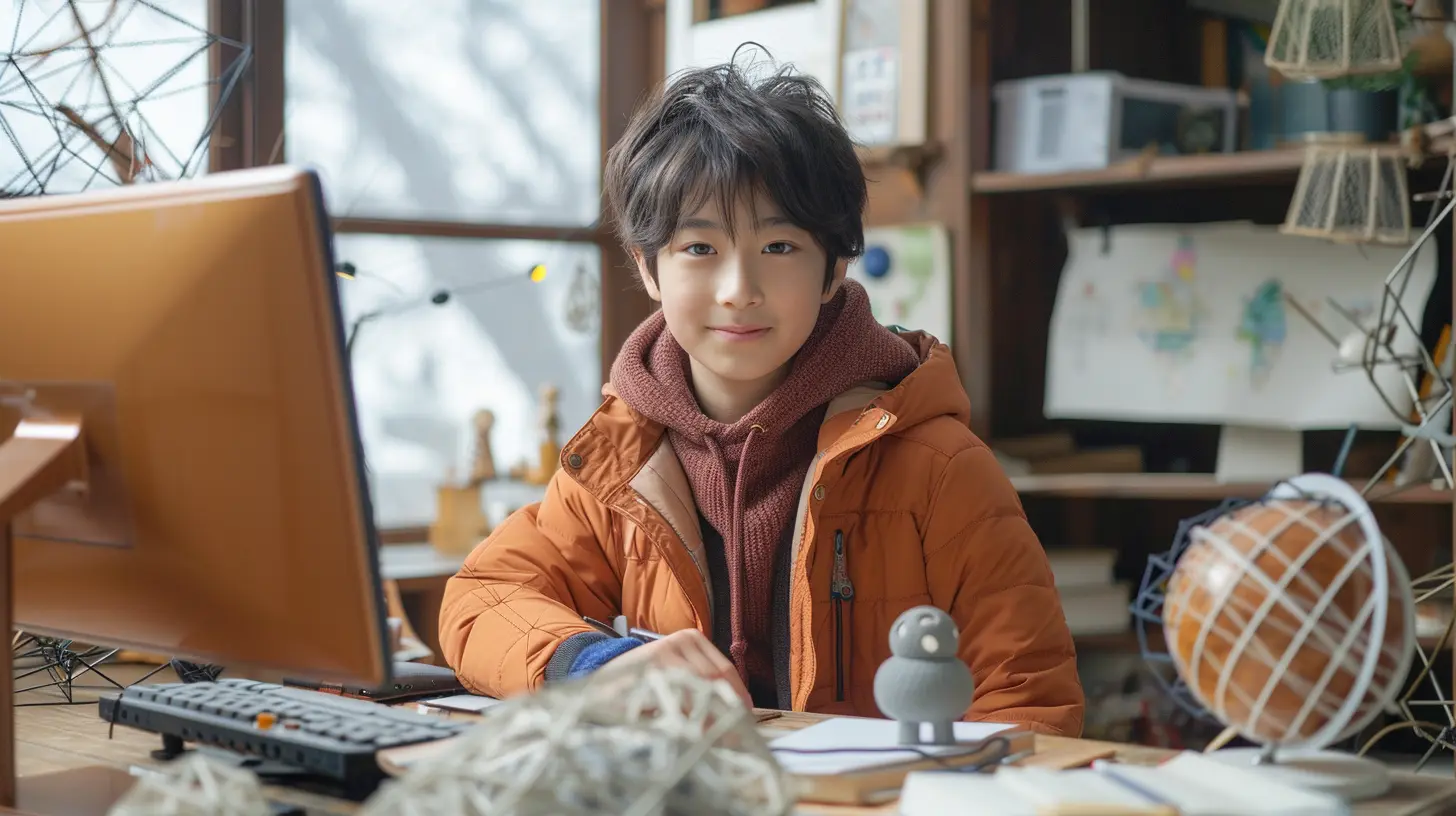How to Incorporate STEM Learning into After-School Programs
20 August 2025
Do you remember how after-school programs used to be all about arts and crafts, dodgeball, and maybe a puzzle or two? Don’t get me wrong—those were fun! But in today’s fast-paced, tech-driven world, there’s a golden opportunity hiding in those after-school hours. We’re talking about STEM—Science, Technology, Engineering, and Mathematics. Sounds heavy? It doesn’t have to be.
In this guide, we’re breaking down how to weave STEM learning into after-school programs in a way that’s fun, engaging, and downright magical for kids. Whether you're a teacher, program coordinator, or a parent who wants more bang for their childcare buck, you’ll walk away with actionable ideas.

Why STEM Learning Matters (Especially After School)
Let’s be real—STEM isn't just for future scientists and engineers. It’s for problem solvers, critical thinkers, and creative minds. In other words? It’s for everyone.Kids are natural-born scientists. Ever watched a toddler drop the same spoon ten times just to see what happens? That's science! By incorporating STEM into after-school programs, you're nurturing curiosity when kids are most relaxed and open to learning.
Plus, with school days being packed with testing and tight schedules, after-school programs offer a more flexible, low-pressure environment that’s perfect for hands-on experiments and open-ended exploration.
So, how do we make it happen?
1. Start with the Right Mindset
Alright, first things first—ditch the idea that STEM has to be rigid or overly academic. The goal here isn’t to replicate a school science lab. Instead, think of it like a playground for the mind. Fun, messy, and full of "aha!" moments.Anyone can lead a STEM activity. You don’t need a Ph.D. in rocket science. You just need curiosity, a willingness to ask questions, and the courage to let kids take the lead sometimes.
2. Align STEM with Everyday Interests
Want to keep kids hooked? Tie STEM topics to what they already love.- Into sports? Teach about angles, velocity, and physics through basketball.
- Obsessed with cooking shows? Dive into chemistry by baking cookies (hello, delicious science!).
- Minecraft fans? Great opportunity to introduce architecture, logic, and geometry without them even realizing they’re learning.
The secret sauce? Make STEM relatable. When kids see the connection between STEM and their world, the learning comes naturally.
3. Create a Hands-On STEM Zone
No one wants to sit through a lecture after a full school day. Trust me. That’s where a STEM zone—a dedicated space for experiments and projects—comes in.Stock it with basics like:
- Recyclable materials (boxes, containers, paper towel rolls)
- LEGO kits or building blocks
- Markers, scissors, glue
- Magnets, rulers, measuring cups
- Safe household items like baking soda, vinegar, and food coloring
Make it cozy, colorful, and curiosity-packed. Think of it as the STEM version of an art corner.
4. Plan Engaging and Age-Appropriate Activities
You wouldn’t hand a 6-year-old a soldering kit (I hope). Tailor activities to different age groups and skill levels. Here are some ideas to get the creative engines revving:For Younger Kids (Grades K–3)
- Sink or Float? Let them test different items in water to learn density.- Bug Hunt: Head outside with magnifying glasses and look for insects.
- Marshmallow Towers: Introduce basic engineering with toothpicks and marshmallows.
For Middle Grades (Grades 4–6)
- DIY Slime Lab: Explore chemical reactions in a fun, gooey way.- Balloon Rockets: Teach force and motion by racing balloons on strings.
- Solar Oven S'mores: Use solar energy to cook up a treat.
For Older Students (Grades 7+)
- Build a Robot Arm: Use cardboard, string, and syringes to mimic movement.- Code with Scratch: Introduce them to basic programming in a game form.
- 3D Design Challenge: Use free software like TinkerCAD to design simple objects.
Remember, keep it open-ended. Sometimes the best learning happens when the "experiment" doesn't quite go as planned.
5. Incorporate Tech (Without Relying on Screens 24/7)
Look, we all love a good app, but STEM learning doesn’t always mean more screen time. That said, a little tech goes a long way when used purposefully.- Coding tools like Scratch, Tynker, or Blockly are great for introductory programming.
- Robotics kits like LEGO Mindstorms or Ozobots make engineering accessible.
- AR/VR tools can transport kids to different planets or inside the human body (talk about field trips from home!).
Balance is key. Mix hands-on, screen-free activities with tech-based learning to keep kids engaged without burnout.
6. Invite Role Models and Guest Speakers
STEM careers are way cooler when they’re real. Ever seen a kid’s face light up when they meet an actual astronaut, coder, or veterinarian? Priceless.Bring in guest speakers—local engineers, doctors, mechanics, or game designers. If in-person visits aren’t practical, video chats work, too.
Even better? Host mini career days where kids can "interview" professionals and ask curious questions like, “Have you ever blown something up in your lab?” (Spoiler alert: they probably have.)
7. Keep It Collaborative
STEM is a team sport. Collaboration teaches communication, delegation, and how to bounce ideas off one another without someone storming off (a vital life skill, right?).Encourage group projects like:
- Building a bridge that holds the most weight
- Designing an eco-friendly city model
- Creating a group Rube Goldberg machine
A little competition can make it spicy, but remember: the goal is teamwork, not turf wars.
8. Use Real-World Problems
Kids care more when the stakes feel real. Give them challenges that connect to real-world issues:- Water filtration: Build a DIY filter and talk about global clean water access.
- Recycling robots: Design prototypes that could sort trash.
- Energy solutions: Test out solar panels or wind turbines on a small scale.
This approach taps into their empathy while sharpening their critical thinking skills.
9. Highlight Failure as Part of the Process
Spoiler alert: STEM is messy. Things fall apart. Circuits don’t work. Slime ends up on the ceiling.And you know what? That’s perfect.
Normalize failing forward. Let kids know that most of the world’s greatest inventions came from mistakes, trial-and-error, or downright disasters. (Post-it Notes, anyone?)
Create a culture where the process matters more than the result—because that’s where the real learning lives.
10. Seek Feedback and Keep Improving
Last but not least—ask the kids! What did they love? What bored them to tears? What else would they want to try?Regular feedback helps you refine your program to keep it kid-centered, dynamic, and irresistible. It also gives kids ownership of their learning, which creates a sense of pride and belonging.
Bonus Tips: Making STEM Programs Inclusive
STEM is for everyone—yes, everyone. That means being mindful of inclusivity.- Representation matters: Use diverse examples of scientists and innovators.
- Create a judgment-free zone: Make sure every kid feels safe to ask “weird” questions.
- Adapt for different learning styles: Offer visual, auditory, and kinesthetic activities.
Remember, the goal is to help every kid see themselves in STEM—not just the ones who already love science.
Final Thoughts: STEM is the New Superpower
So, how do you incorporate STEM learning into after-school programs? You make it relevant, hands-on, and fun. You meet kids where they’re at and let them explore without fear of failure. You create a space where volcanoes erupt, robots crash into walls, and the only limit is imagination.At the end of the day, STEM isn’t just about preparing kids for careers—it’s about preparing them for life. It teaches them how to think, solve, and adapt. And honestly? That’s a superpower worth cultivating.
So go ahead—roll up your sleeves, grab some baking soda, and start building the next generation of thinkers and tinkerers.
all images in this post were generated using AI tools
Category:
Stem EducationAuthor:

Olivia Lewis
Discussion
rate this article
1 comments
Tobias McCloud
Empowering students through hands-on STEM experiences.
September 4, 2025 at 12:38 PM

Olivia Lewis
Absolutely! Hands-on STEM experiences are crucial for engaging students and fostering critical thinking skills. Incorporating these activities into after-school programs can spark interest and boost confidence in STEM fields.


